Uji pendengaran mengukur penurunan pendengaran pada telinga kanan dan kiri seseorang. Hasilnya akan membantu Anda dan pasien memutuskan apakah alat bantu dengar dapat membantu.
Instruksi
Use the hearing test section of the assessment form and check the Grade of hearing loss table to find out if the person has any hearing loss.
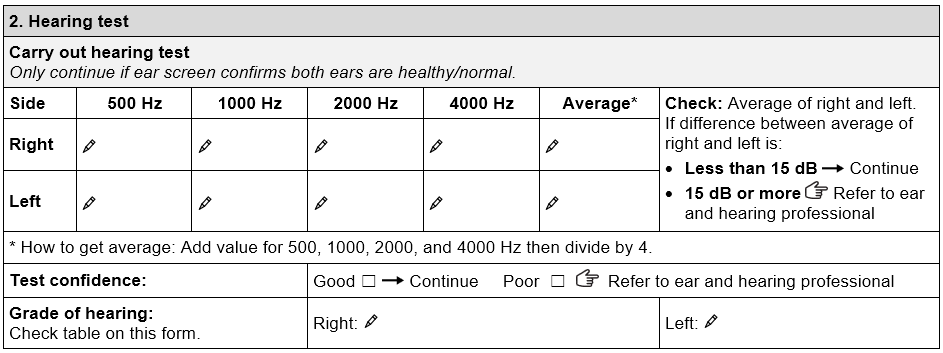
Kiat
Kiat-kiat berikut ini akan memudahkan Anda berbicara dengan orang yang kurang dengar:
- Berbicaralah dengan jelas dan pelan. Jangan berteriak.
- Berdiri/Duduk di tempat dengan pencahayaan yang baik dan menghadaplah ke orang tersebut sehingga wajah Anda terlihat jelas ketika sedang berbicara.
- Jangan melebih-lebihkan gerakan bibir Anda karena dapat mempersulit lawan bicara Anda untuk mengikuti apa yang Anda katakan.
- Usahakan agar kebisingan sekitar seminimal mungkin karena akan mempersulit orang untuk mendengar, bahkan jika mereka menggunakan alat bantu dengar.
- Jika pembicaraan melibatkan lebih dari satu orang di tempat yang sama, usahakan untuk berbicara satu per satu, bukan bersama-sama. Berbicara bergiliran memudahkan orang tersebut untuk mengikuti percakapan.
Pertanyaan
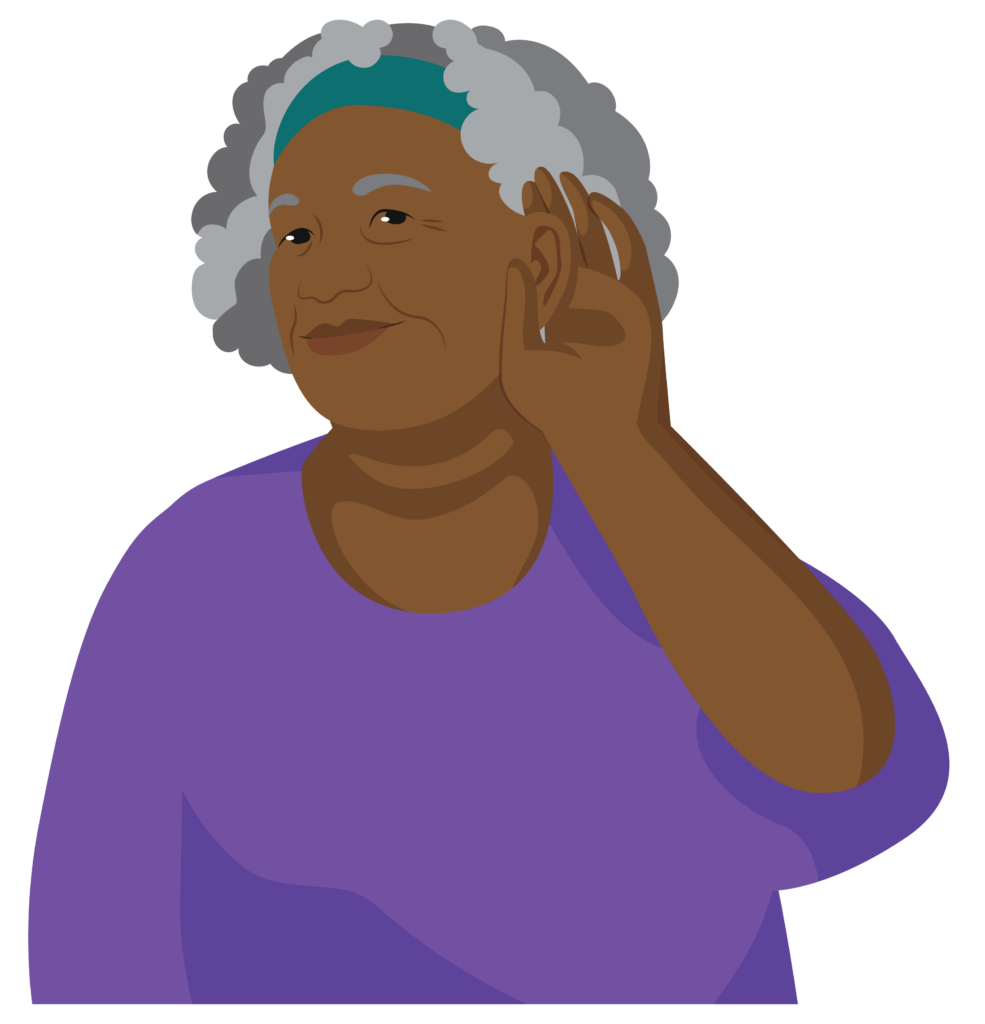
Masih ingat Malicka?
Malicka berusia 70 tahun dan mengalami kurang dengar.
Selama uji pendengaran, ia terus meminta tenaga kesehatan untuk mengulangi apa yang mereka katakan.
Apa yang dapat tenaga kesehatan lakukan untuk membantu Malicka?
Pilih dua jawaban.
Jawaban yang benar adalah c dan d.
Menghadap Malicka dengan pencahayaan yang baik dan berbicara dengan jelas dan perlahan akan mempermudah Malicka memahami apa yang Anda katakan.
Selalu lakukan skrining kesehatan telinga untuk memeriksa kondisi telinga seseorang sebelum menjalankan uji pendengaran.
Jika orang mengalami gangguan kesehatan telinga, hasil uji pendengarannya mungkin akan lebih buruk.
Menangani gangguan kesehatan telinga terlebih dahulu akan memberikan hasil pengukuran pendengaran yang lebih akurat.
Menjalankan uji pendengaran
Saat melakukan uji pendengaran:
- Jelaskan uji pendengaran kepada pasien
- Latihkan uji pendengaran
- Jalankan uji pendengaran
- Hitung rata-rata ambang pendengaran
- Catat hasil masing-masing telinga.
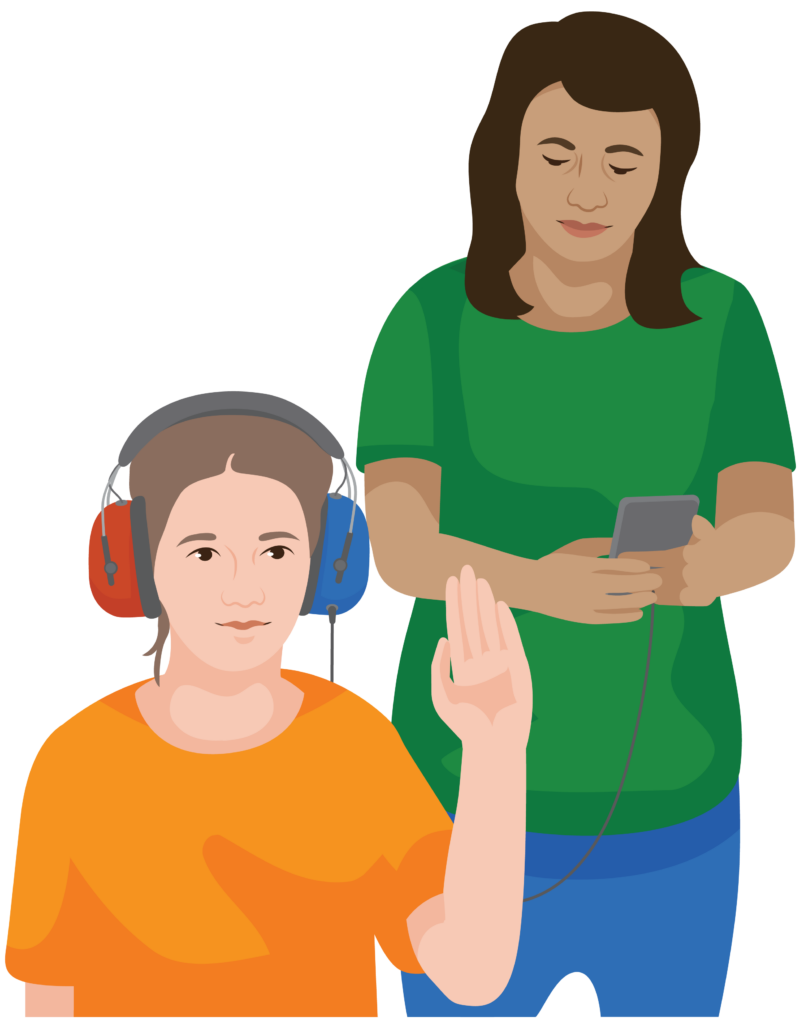
1. Menjelaskan uji pendengaran
Jelaskan bahwa Anda akan menguji pendengaran pasien dengan cara mengukur suara paling pelan yang dapat didengarnya (ambang pendengaran).
2. Melatihkan uji pendengaran
Jelaskan:
- Begitu mendengar suara, segera tekan tombol respons atau angkat tangan Anda
- Lepaskan tombol atau turunkan tangan Anda segera setelah tidak lagi mendengar suara.
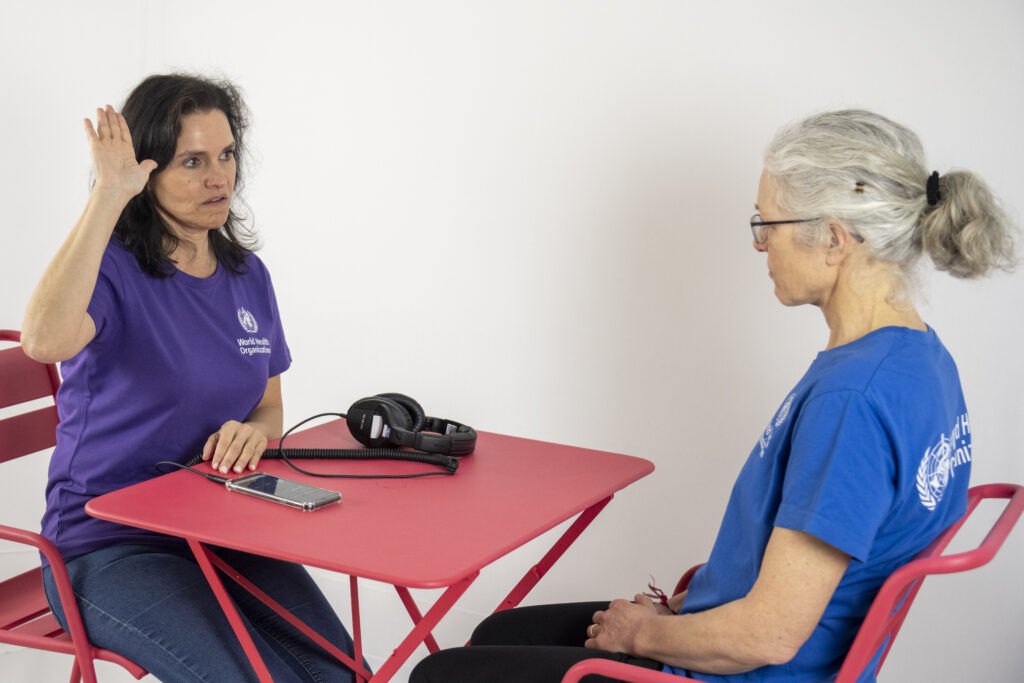
Coba berlatih dengan pasien menggunakan suara dengan frekuensi 1.000 Hz pada volume 40 dB:
- Minta pasien mengangkat tangan ketika mendengar suara dan menurunkan tangan ketika suara berhenti
- Ulangi dua kali di setiap telinga
- Jika orang tersebut tidak dapat mendengar suara dalam latihan, naikkan volume suara sebanyak 10 dB dan ulangi latihan.
Instruksi
Jika pasien tidak berhasil menjalani latihan, jangan menjalankan uji pendengaran. Rujuk ke tenaga profesional telinga dan pendengaran.
Sebelum memulai uji pendengaran, tanyakan kepada pasien apakah mereka dapat mendengar lebih baik di salah satu telinga.
- Lakukan uji pendengaran pada telinga yang dapat mendengar lebih baik dulu
- Jika pendengaran kedua telinga pasien sama, awali uji pendengaran pada telinga kanannya.
Pertanyaan
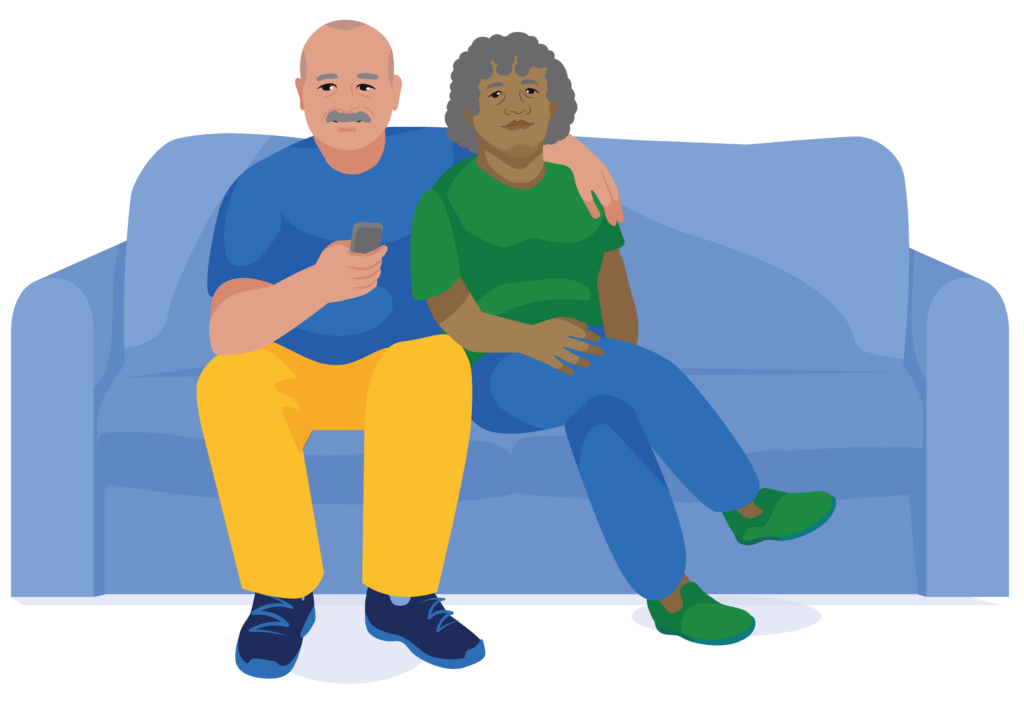
Masih ingat John?
John mengalami kurang dengar. Dia datang ke layanan kesehatan setempat untuk mengikuti skrining kesehatan telinga dan uji pendengaran.
Tenaga kesehatan bertanya kepada John, telinga mana yang lebih dapat mendengar lebih baik? John tidak yakin.
Telinga mana yang sebaiknya diperiksa terlebih dahulu oleh tenaga kesehatan?
Pilih satu jawaban.
Jawaban yang benar adalah b.
John tidak yakin apakah salah satu telinganya dapat mendengar lebih baik. Karena tidak pasti, lakukan uji pendengaran pada telinga kanan.
Jawaban a, c, dan d salah.
Memulai pada telinga dengan pendengaran yang lebih baik (jika diketahui) dapat membantu orang merasa lebih percaya diri selama uji pendengaran, karena akan lebih mudah bagi mereka untuk mendengar suara-suara selama uji pendengaran.
3. Menjalankan uji pendengaran
- Minta pasien mengenakan headphone peredam bising. Pastikan pasien berada di posisi yang benar.
- Mulai tes pada telinga pasien yang memiliki pendengaran yang lebih baik. Jika tidak diketahui telinga mana yang pendengarannyalebih baikdiketahui, awali tes dengan telinga kanan pasien.
- Atur tombol frekuensi pada 1.000 Hz dan volume 40 dB.
Kiat
Agar pengujian semakin akurat:
- Posisikan diri Anda sehingga pasien tidak dapat melihat Anda menyalakan suara
- Variasi kecepatan Anda menyalakan suara agar orang tersebut tidak menebak-nebak kapan Anda akan menyalakan suara berikutnya.
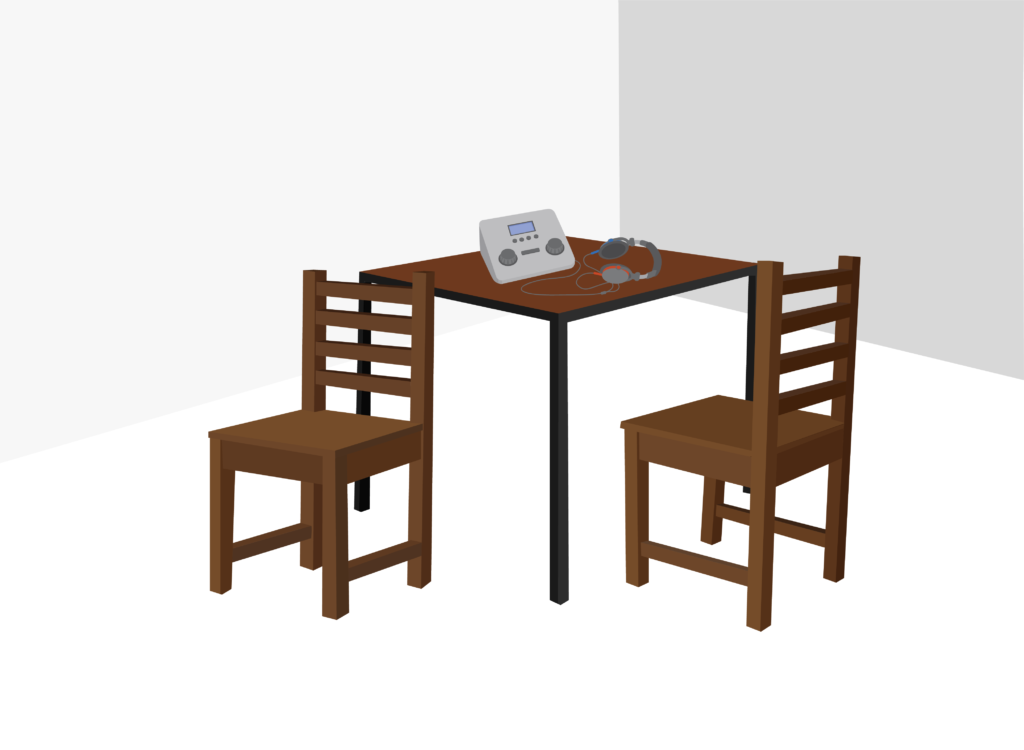
Suara frekuensi tinggi di atas 1.000 Hz biasanya lebih mudah didengar sehingga pasien merasa lebih percaya diri saat memulai uji pendengaran.
- Tekan tombol selama 2 hingga 3 detik dan lihat apakah pasien mengangkat tangannya/merespons:
- Jika pasien mengangkat tangan/merespons, turunkan volume sebesar 10 dB
- Jika orang tersebut tidak merespons, naikkan volume suara sebesar 5 dB
- Terus sesuaikan volume suara sampai menemukan volume paling pelan yang dapat didengar oleh pasien:
- Ulangi suara pada volume tersebut sebanyak tiga kali untuk memastikan ambang pendengaran
- Jika orang tersebut merespons dengan benar setidaknya dua dari tiga kali pada frekuensi yang diuji, catat ambang pendengaran pada formulir
- Ulangi pengujian dengan frekuensi 2.000 Hz, 4.000 Hz, dan 500 Hz
- Jalankan langkah-langkah yang sama pada telinga kiri orang tersebut.
Instruksi
Tonton video berikut tentang uji pendengaran dengan aplikasi audiometer pada smartphone.
Pertanyaan
1. Berapa tingkat kebisingan ambien yang ideal untuk uji pendengaran?
Pilih satu jawaban.
Jawaban yang tepat adalah kurang dari 40 dB.
Tingkat kebisingan idealnya di bawah 40 dB. Ganti penataan atau lokasi uji pendengaran jika tingkat kebisingan melebihi 40 dB.
2. Jika pasien tidak merespons suara selama uji pendengaran, apa yang perlu Anda lakukan?
Klik pilihan jawaban untuk melihat penjelasannya.
Tidak tepat.
Volume suara sebaiknya tidak diturunkan karena pasien masih belum dapat mendengar suara.
Jawaban ini benar.
Naikkan volume sebanyak 5 dB dan perhatikan apakah pasien dapat merespons. Jika pasien merespons, ulangi suara tersebut sebanyak tiga kali untuk memastikan ambang pendengaran pasien.
Tidak tepat.
Jangan hentikan uji pendengaran sampai ambang pendengaran pasien telah ditemukan.
Kiat
Jangan berhenti menekan tombol terlalu cepat saat menyalakan suara uji pendengaran. Suara sebaiknya dinyalakan selama 2 hingga 3 detik agar pasien dapat mendengar suara.
Kegiatan
Dalam kelompok, praktikkan secara bergilir peran sebagai tenaga kesehatan yang memeriksa dan pasien.
Persiapkan alat bantu dengar:
- Cari tempat dengan tingkat kebisingan yang cukup rendah menggunakan pengukur tingkat suara atau aplikasi yang diunduh hearWHO app:
- Klik "Check your hearing" untuk mengakses fitur pengukur tingkat kebisingan
- Beri aplikasi izin yang diperlukan untuk mengukur kebisingan
- Atur tempat uji pendengaran sehingga pasien tidak dapat melihat Anda secara langsung.
Uji pendengaran:
- Jelaskan uji pendengaran kepada pasien
- Jalankan uji pendengaran dengan suara frekuensi 1.000, 2.000, 4.000, dan 500 Hz pada telinga dengan pendengaran yang lebih baik atau telinga kanan pasien
- Setelah mencapai ambang pendengaran, ulangi suara hingga tiga kali
- Pasien seharusnya merespons dengan benar setidaknya dua kali dari tiga kesempatan
- Catat suara paling pelan yang dapat didengar orang tersebut
- Ulangi langkah-langkah ini pada telinga satunya.
Kepastian hasil uji pendengaran
Pertimbangkan seberapa yakin Anda akan hasil uji pendengaran.
Anda mungkin merasa yakin jika pasien:
- Merespons suara yang dinyalakan secara konsisten
- Ambang pendengaran untuk masing-masing frekuensi diketahui dengan jelas.
Anda mungkin merasa kurang atau tidak yakin diri jika pasien:
- Memberikan respons yang tidak teratur atas suara yang dinyalakan
- Memberikan respons saat suara tidak dinyalakan
- Hanya merespons ketika melihat penguji bergerak.
Jika Anda merasa:
- yakin akan hasil uji pendengaran lanjutkan ke langkah selanjutnya.
- tidak cukup yakin akan hasil uji pendengaran diskusikan dengan pendamping layanan. Rujuk orang tersebut ke tenaga profesional telinga dan pendengaran jika perlu.
Peringatan
Agar alat bantu dengar dapat diatur dengan tepat, hasil uji pendengaran juga harus akurat.
4. Menghitung ambang pendengaran rata-rata
- Hitung rata-rata dengan menambahkan nilai ambang pendengaran frekuensi 500 Hz, 1.000 Hz, 2.000 Hz, dan 4.000 Hz lalu bagi 4
- Bandingkan rata-rata ambang pendengaran telinga kanan dan kiri:
- Selisih kurang dari 15 dB Lanjutkan
- Selisih 15 dB atau lebih Rujuk ke tenaga profesional telinga dan pendengaran.
Selisih 15 dB atau lebih
Orang dengan selisih ambang pendengaran telinga kanan dan kiri sebesar 15 dB atau lebih meliputi orang dengan penurunan pendengaran di satu sisi (unilateral) dan orang dengan penurunan pendengaran asimetris. Mereka memiliki kebutuhan yang lebih kompleks. Rujuk ke tenaga profesional telinga dan pendengaran.
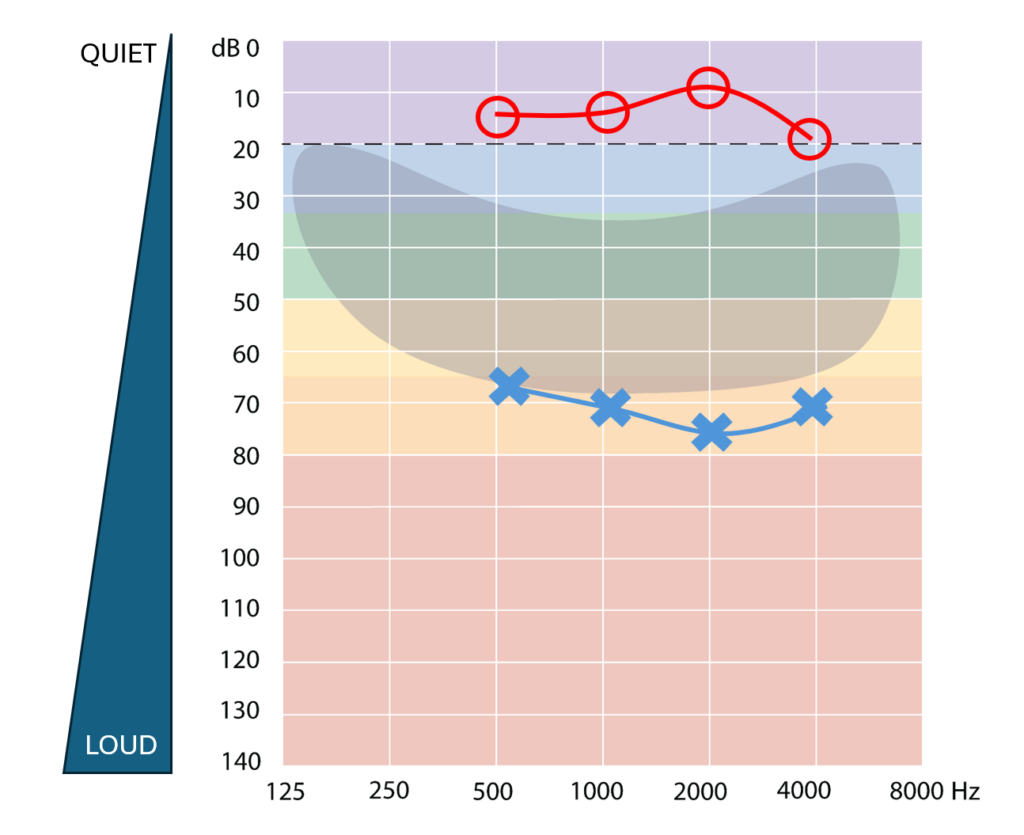
Satu telinga dalam rentang penurunan pendengaran normal dan telinga satu lagi mengalami penurunan pendengaran ringan hingga parah.
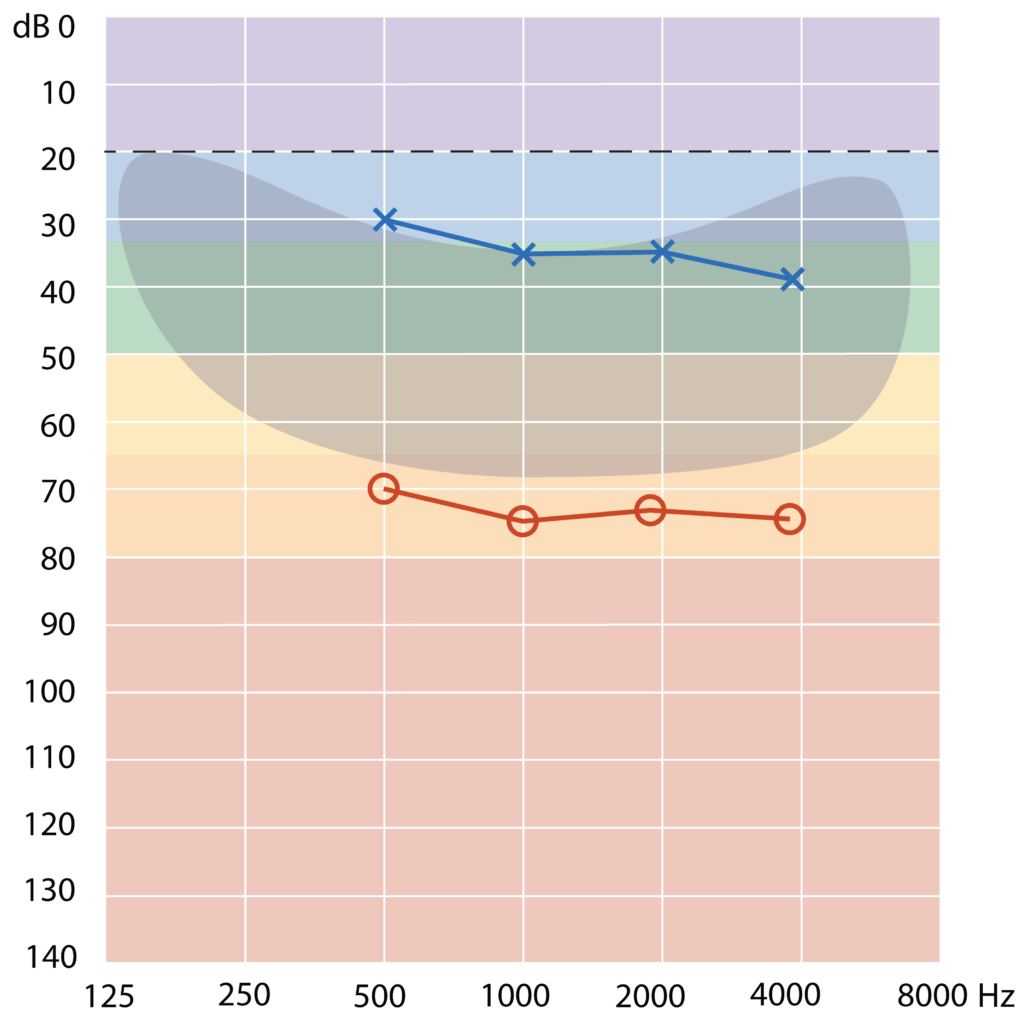
Tingkat-tingkat penurunan pendengaran dengan selisih ambang telinga kanan dan kiri lebih dari 15 dB.
Pertanyaan
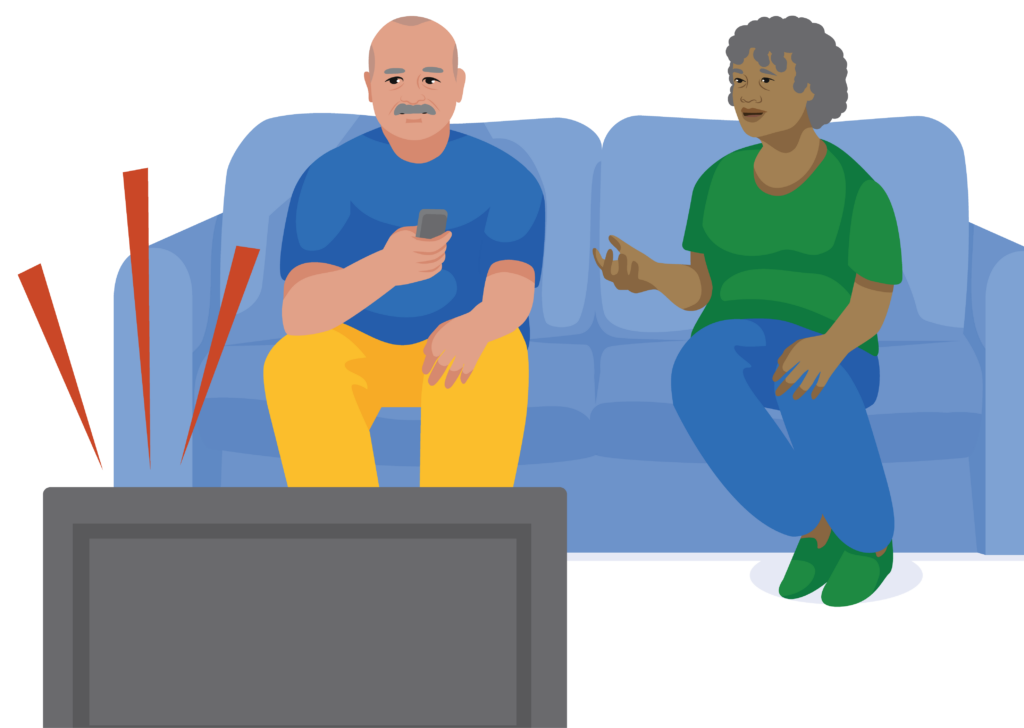
Masih ingat John?
John sudah pensiun dan tinggal bersama istrinya, Mary.
John mengunjungi fasilitas kesehatan setempat untuk menjalani skrining kesehatan telinga dan uji pendengaran. Dia memberikan jawaban dengan percaya diri selama uji pendengaran berlangsung.
Perhatikan ambang pendengaran John pada masing-masing frekuensi:
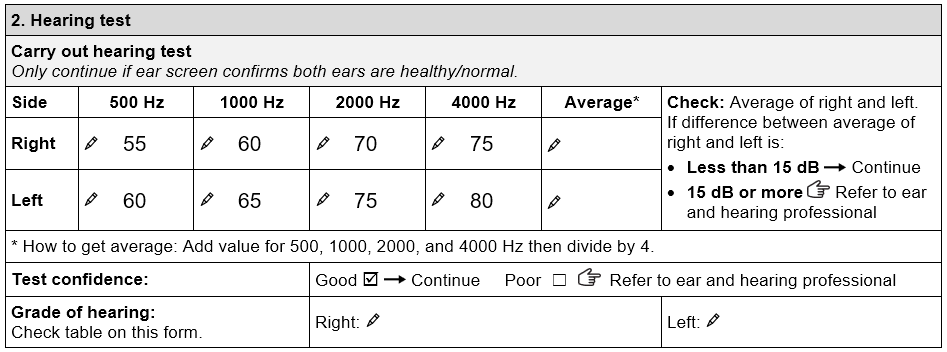
1. Berapa ambang pendengaran rata-rata telinga kanan John?
Pilih satu jawaban.
Jawaban yang benar adalah 65 dB.
Angka ini adalah rata-rata yang diperoleh dari menambahkan semua angka kemudian membaginya dengan empat.
2. Berapa ambang pendengaran rata-rata telinga kiri John?
Pilih satu jawaban.
Jawaban yang benar adalah 70 dB.
Angka ini adalah rata-rata yang diperoleh dari menambahkan semua angka kemudian membaginya dengan empat.
3. Apakah John mengalami selisih pendengaran telinga kanan dan kiri di bawah 15 dB?
Pilih satu jawaban.
Jawaban yang tepat adalah "Ya".
Selisih ambang pendengaran kedua telinga kurang dari 15 dB. Petugas dapat melanjutkan uji pendengaran.
Check the Grade of hearing loss table below or on the assessment form.
| Tingkat | Rata-rata |
| Normal | Rata-rata kurang dari 20 dB |
| Penurunan pendengaran ringan | Rata-rata 20–34 dB |
| Penurunan pendengaran sedang | Rata-rata 35–49 dB |
| Penurunan pendengaran cukup berat | Rata-rata 50–64 dB |
| Penurunan pendengaran berat | Rata-rata 65–79 dB |
| Penurunan pendengaran parah | Rata-rata lebih dari 80 dB |
4. Seberapa tinggi tingkat penurunan pendengaran telinga kanan John?
Pilih satu jawaban.
Jawaban yang benar adalah penurunan pendengaran berat.
Ambang pendengaran rata-rata 65 dB termasuk dalam penurunan pendengaran berat.
5. Seberapa tinggi tingkat penurunan pendengaran telinga kiri John?
Pilih satu jawaban.
Jawaban yang benar adalah penurunan pendengaran berat.
Ambang pendengaran rata-rata 70 dB termasuk dalam penurunan pendengaran berat.
5. Catat hasil untuk masing-masing telinga
- Catat rata-rata nilai pendengaran pada bagian uji pendengaran di dalam formulir
- Tentukan dan catat kepastian hasil uji pendengaran
- Catat tingkat pendengaran telinga kanan dan kiri.
Follow the recommended action for the level of hearing loss found in the Grade of hearing loss table.
Masih ingat John?

Tenaga kesehatan memperhatikan tabel tingkat penurunan pendengaran.
John adalah orang dewasa dengan penurunan pendengaran berat di kedua telinganya. Tenaga kesehatan dapat terus menyediakan alat bantu dengar untuk John.
Pertanyaan

Masih ingat Malicka?
Perhatikan hasil uji pendengaran Malicka.
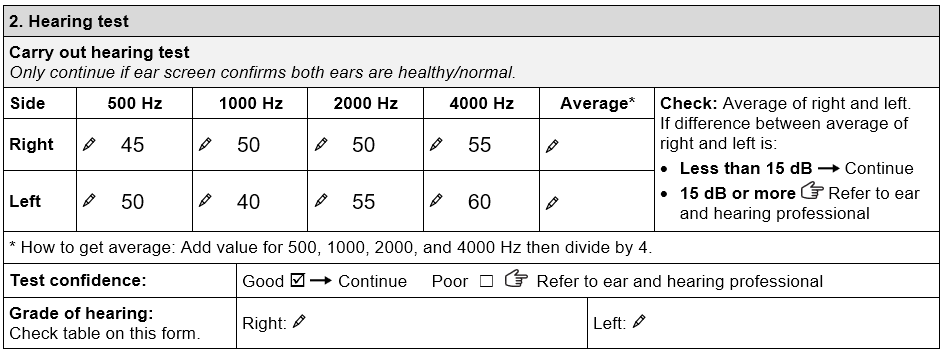
Hitung rata-rata penurunan pendengaran telinga kanan dan kiri Malicka.
1. Apakah selisih penurunan pendengaran telinga kanan dan kiri Malicka kurang dari 15 dB?
Pilih satu jawaban.
Jawaban yang tepat adalah "Ya".
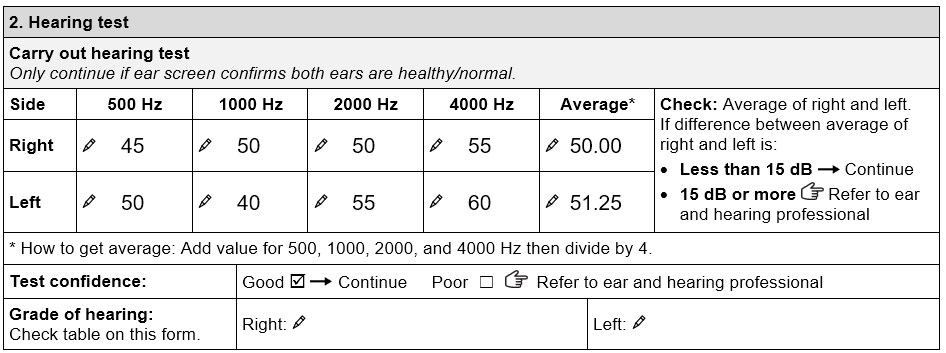
Tenaga kesehatan dapat melanjutkan uji pendengaran.
Perhatikan tabel tingkat penurunan pendengaran berikut.
| Tingkat | Rata-rata |
| Normal | Rata-rata kurang dari 20 dB |
| Penurunan pendengaran ringan | Rata-rata 20–34 dB |
| Penurunan pendengaran sedang | Rata-rata 35–49 dB |
| Penurunan pendengaran cukup berat | Rata-rata 50–64 dB |
| Penurunan pendengaran berat | Rata-rata 65–79 dB |
| Penurunan pendengaran parah | Rata-rata lebih dari 80 dB |
2. Seberapa tinggi tingkat penurunan pendengaran telinga kanan Malicka?
Pilih satu jawaban.
Jawaban yang tepat adalah penurunan pendengaran cukup berat.
Rata-rata ambang pendengaran telinga kanan Malicka adalah 50,00 dB. Penurunan pendengaran cukup berat mencakup rata-rata ambang pendengaran 50–64 dB.
3. Seberapa tinggi tingkat penurunan pendengaran telinga kiri Malicka?
Pilih satu jawaban.
Jawaban yang tepat adalah penurunan pendengaran cukup berat.
Rata-rata ambang pendengaran telinga kanan Malicka adalah 51,25 dB. Penurunan pendengaran cukup berat mencakup rata-rata ambang pendengaran 50–64 dB.
Menjelaskan hasil tes
Setelah menyelesaikan uji pendengaran dan mengidentifikasi tingkat penurunan pendengaran, jelaskan hasil ini dan apakah orang tersebut membutuhkan alat bantu dengar.
Masih ingat Malicka?

Setelah Malicka menjalani uji pendengaran, tenaga kesehatan menjelaskan bahwa ia mengalami penurunan pendengaran cukup berat. Ini berarti, Malicka mungkin akan mengalami kesulitan untuk memahami kata-kata, bahkan di lingkungan yang sunyi sekalipun.
Menggunakan alat bantu dengar dapat mempermudah komunikasi dengan keluarganya, terutama dalam kegiatan-kegiatan sosial.
Malicka mengatakan ingin menjalani pemeriksaan untuk memastikan apakah alat bantu dengar dapat membantu.